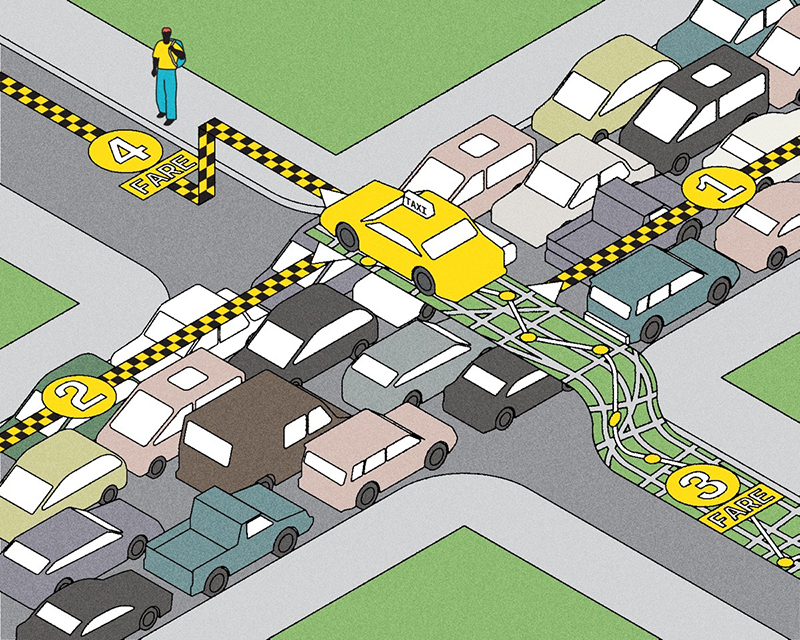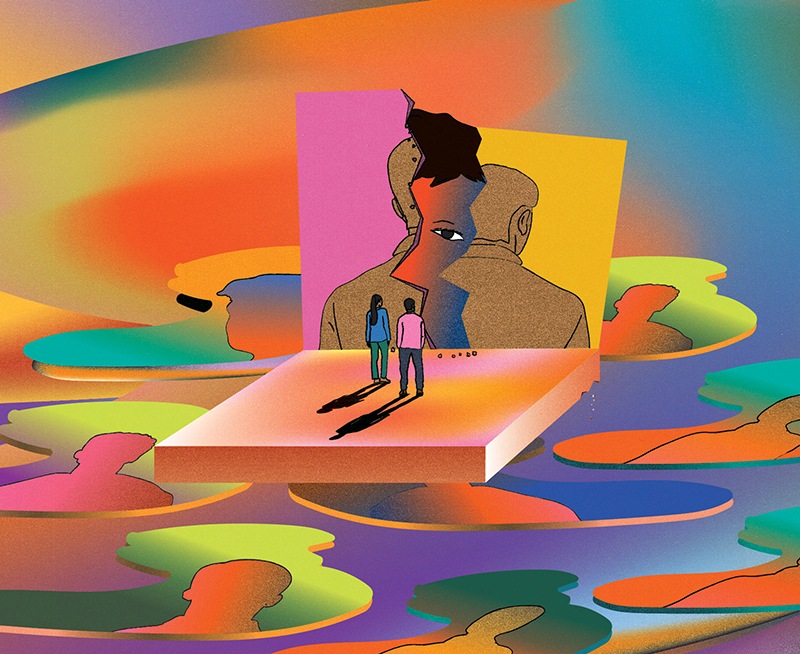New U of T research could prevent thousands of traffic collisions a year with a novel concept for brake lights on cars. Zhonghai Li and Professor Paul Milgram used a computer simulation to demonstrate how such a system might work. “We’re causing an optical illusion that affects how people behave,” says Milgram, a professor of mechanical and industrial engineering.
All drivers use subtle visual cues to determine how far they are from the car ahead of them. One of those factors is “optical looming,” or how quickly the size of the car ahead appears to be changing. The quicker the size of the car ahead appears to grow, the less time drivers judge there to be before they will hit that car. When the car ahead brakes rapidly, drivers often have mere fractions of a second to react and collisions may result.
Li’s PhD research proposes using currently available sensing and display technology to make brake lights that change their appearance dynamically during emergency braking. Such lights would exaggerate the natural optical looming effect, but only very slightly, making the car ahead seem sufficiently closer in time. This would cause drivers to brake earlier to help them avoid a crash. In simulations, Li and Milgram saw drivers increase the inter-vehicle time separations by 100 to 300 milliseconds, under low visibility conditions. This increase, says Milgram, is potentially sufficient for “thousands of averted crashes per year worldwide.”
Recent Posts
People Worry That AI Will Replace Workers. But It Could Make Some More Productive
These scholars say artificial intelligence could help reduce income inequality
A Sentinel for Global Health
AI is promising a better – and faster – way to monitor the world for emerging medical threats
The Age of Deception
AI is generating a disinformation arms race. The window to stop it may be closing




